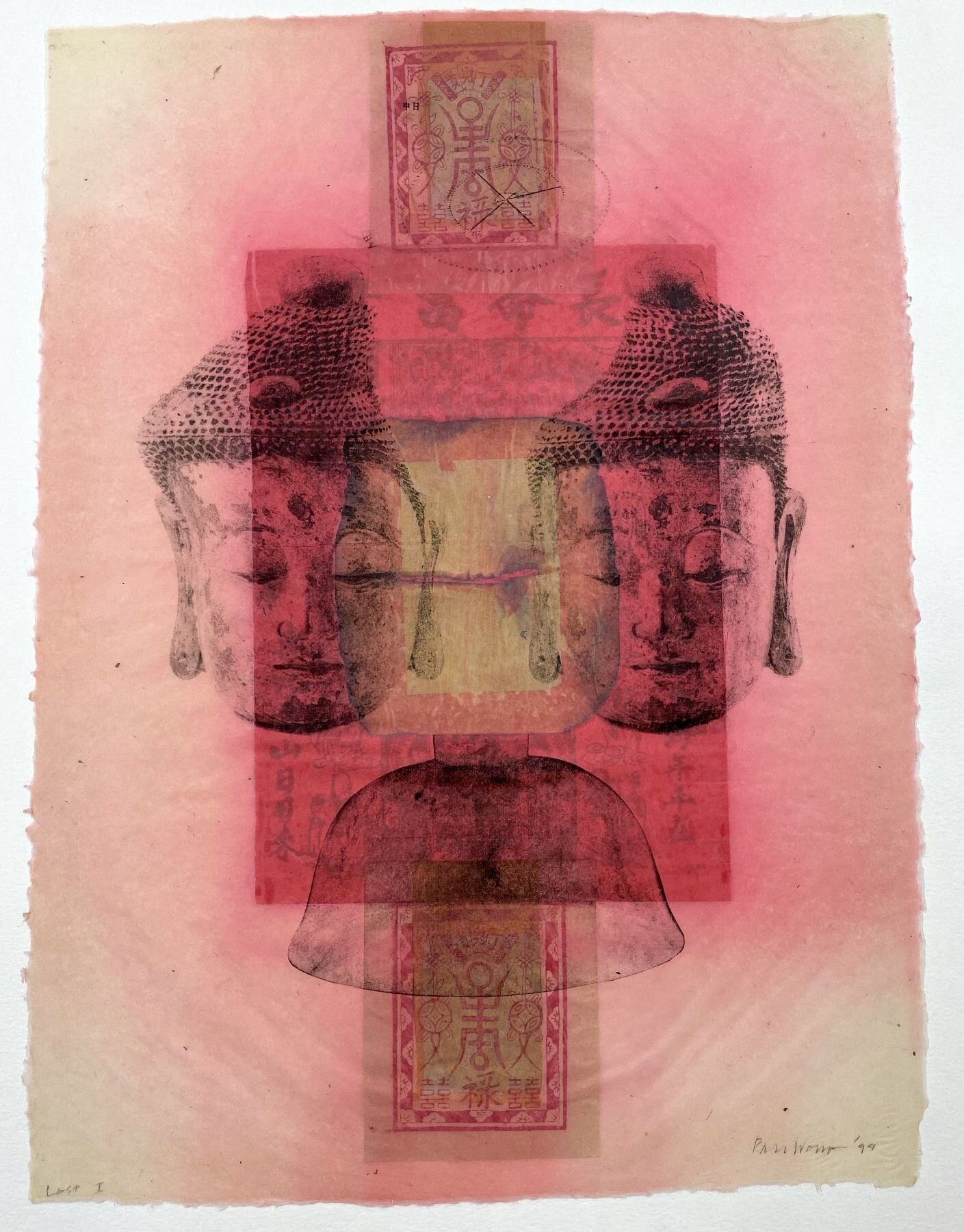Paul Wong
Lost I, 1999, and Lost II, 1999
the structure
The paper initiates a discourse. It is a prepared ground of premise upon which I cobble together a selection of images: I gather, edit, cut, and transfer them onto the paper to complete the whole composition. The eight-hour-beaten abaca fiber is a translucent gauze that traps messages to the dead. I search New York’s Chinatown for paper joss “made in China” in herbal and grocery stores. Available everywhere for general consumption, it is burned in reverence to one’s deceased ancestors. I partially burn the paper joss into fragments before incorporating them into the work. The ink printed on these amulets, blessings, and offerings is fugitive and bleeds when embedded in the papermaking process, revealing a ghost-like world with its residual blur. This strategy has evolved during various projects: flat works, wallpaper, books, and sculptural components operating in site-specific installations, to define a story. The procedure spreads out into space.
the rubbing
Images are solvent-transferred with lacquer thinner and rubbed by hand. The lexicon is made up of photocopies gleaned during research into Chinese art and history; collected materials; a gathering of images from books, ephemera, and photographs, appropriated and merged into interpretive narratives. The hand-transfer process using solvent and a bone burnisher is, for me, analogous to the process of ink rubbings of Chinese stone steles onto paper. The paper absorbs the content of materiality that interfaces with the imprint of hand-scribed graphics. The skin (paper) and the impression (graphic alignment) merge as a new kind of work in and on paper. The past moves into the present to comment on death in traditional Chinese terms and the socio-political issues of modern China. My interest in death filtered through the work is not morbid but rather a fascination with the afterlife that remains as mysterious today as it has been since the wake of mankind. Now in cult-ridden 2011, aspects of the world’s end and the continuing human corruption of the planet also require comment. A conflict to ponder: making paper by hand vs. twenty-first-century technology.
First published in Hand Papermaking magazine, Volume 26, Number 2, Winter 2011. Notes on a Formula by Paul Wong

Paul Wong, Lost I, 1999. Electrostatic transfers and collage on partially burned Chinese vermillion joss paper embedded in translucent abaca paper, 29 x 21-1/4 inches. Unique work. Image courtesy of Dieu Donné.

Paul Wong, Lost II, 1999. Electrostatic transfers and collage on partially burned Chinese vermillion joss paper embedded in translucent abaca paper, 29 x 21-1/4 inches. Unique work. Image courtesy of Dieu Donné.
About the Artist
Paul Wong was the Artistic Director of Dieu Donné from 1978 to 2017, guiding and assisting over 1,000 artists and collaborating one-on-one with 400 artists such as Lesley Dill, Jim Hodges, and Do Ho Suh, among many others. Paul is the recipient of the Joan Mitchell Foundation Painters and Sculptures Grant in recognition of his work as an individual artist. He uses the papermaking process that he developed at Dieu Donné in his own work to create major installations and works in paper for exhibitions at institutions such as the Plains Museum, Fargo, and the Neuberger Museum of Art, Purchase College, State University of New York.
Artist bio courtesy of Dieu Donné
